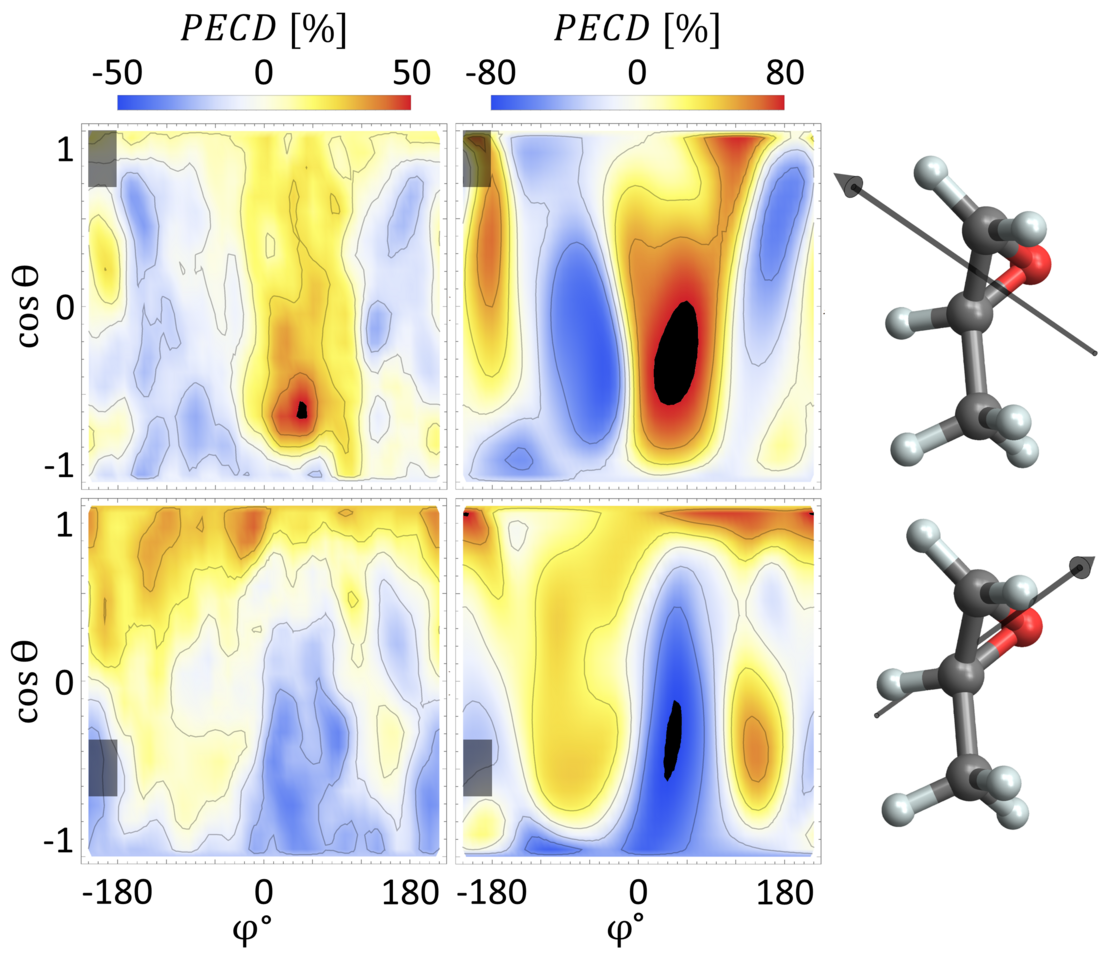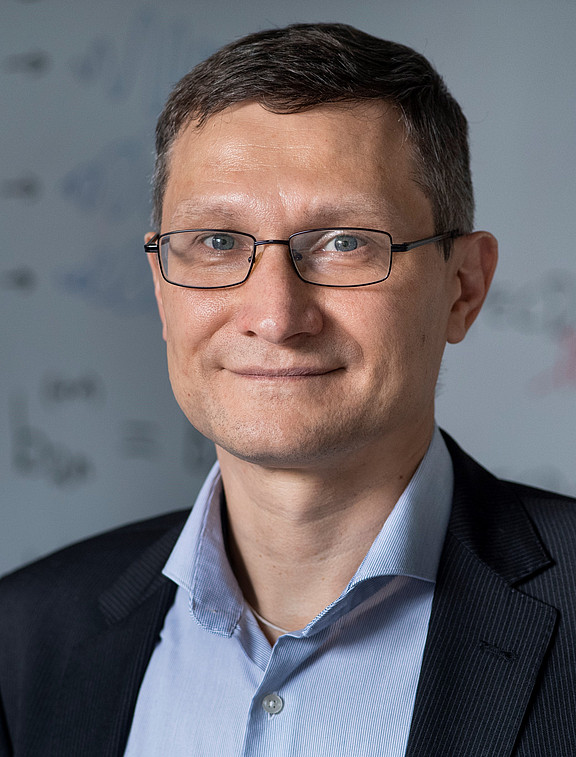Theoretical Atomic and Molecular Physics
Philipp Demekhin studied physics at the Rostov State University (Russia) and obtained there a PhD degree in 2000. After that, he made postdoctoral research in the Rostov State Transport University (Russia), Technical University of Kaiserslautern (with an Alexander-von-Humboldt fellowship), University of Kassel (with an EU Marie Curie fellowship), and University of Heidelberg. In 2013, he obtained a Junior Professor position at the University of Kassel, where he established the Theoretical Atomic and Molecular Physics group. In 2014, he was associated to CINSaT. Currently, he is an außerplanmäßiger Professor at the University of Kassel and holds a permanent position. He is a full member of CINSaT and a spokesperson of the research focal point “Chiral Systems”.

Figure 1: Taken from K. Fehre et al., Phys. Rev. Lett. 127, 103201 (2021). DOI:10.1103/PhysRevLett.127.103201. Measured (left panels) and computed (right panels) fourfold differential PECDs for S-methyloxirane as functions of the two photoelectron emission angles for two different molecular orientations with respect to the light propagation directions, which are indicated by grey arrows in the respective insets. Black spots highlight photoemission directions at which the measured and computed PECDs exceed the presently chosen upper or lower limits of the respective asymmetry scales.
The development of theoretical and computational approaches for ab-initio description of the electronic continuum spectrum in molecules with applications to angle- and time-resolved electron and fluorescence spectroscopy are among the main scientific research expertizes of the group. Thereby, the Theoretical Atomic and Molecular Physics group is entirely integrated in the consortium of scientists aiming at the investigation of electron dynamics of chiral systems. In 2013-2016, this consortium acquired financial support from the State’s Hessen Initiative for the Development of Scientific and Economic Excellence (LOEWE).
In 2018, this consortium of scientists established in Kassel a new DFG collaborative research center SFB-1319 ‘Extreme light for sensing and driving molecular chirality’. In this CRC-project, the Theoretical Atomic and Molecular Physics group plays one of the central roles in the theoretical description of the photoelectron circular dichroism (PECD), observed by experimental cooperation partners in the angle-resolved photoionization and fragmentation spectra of chiral molecules. In 2021, this consortium successfully applied to DFG for a prolongation of the CRC for a second funding period which started in January 2022. This activity of the Theoretical Atomic and Molecular Physics group is a part of the CINSaT focal point “Chiral Systems”.
One of the recent results of the SFB-1319 ELCH is illustrated in Fig. 1. For randomly oriented molecules, PECD emerges on the level of a few percent. It can however be enhanced up to about 10-20% by fixing already one molecular orientation axis in space. Together with the CRC members Reinhard Dörner and Markus Schöffler (Goethe-Universität Frankfurt), Arno Ehresmann (Universität Kassel) and Robert Berger (Philipps-Universität Marburg), we illustrated that PECD of a fully fixed-in-space chiral molecule can reach a much higher contrast of more than 50%. Those findings pave the way for promoting PECD to an unprecedently-sensitive tool for chiral recognition in the gas phase.
Prof. Dr. Philipp Demekhin
full member

- Location
- Universität Kassel
Fachbereich 10 - Naturwissenschaften & Mathematik
Institut für Physik
Heinrich-Plett-Str. 40
34132 Kassel
- Room
- 0187
